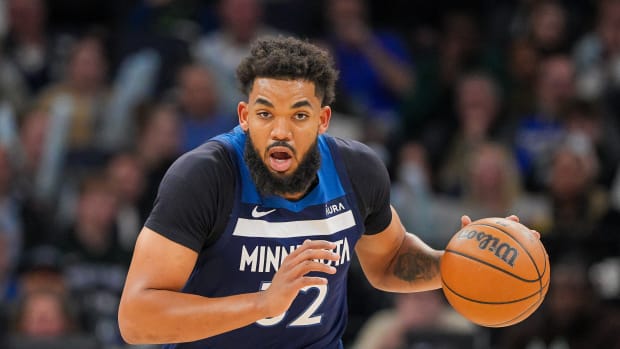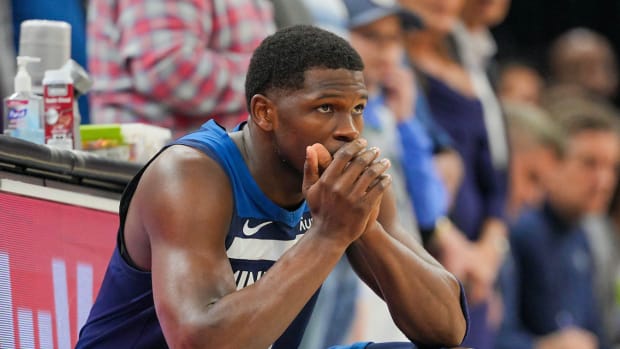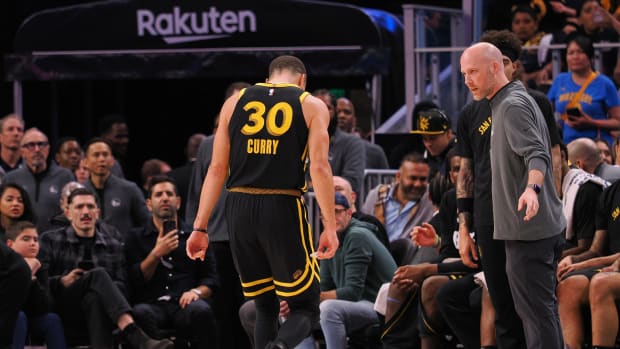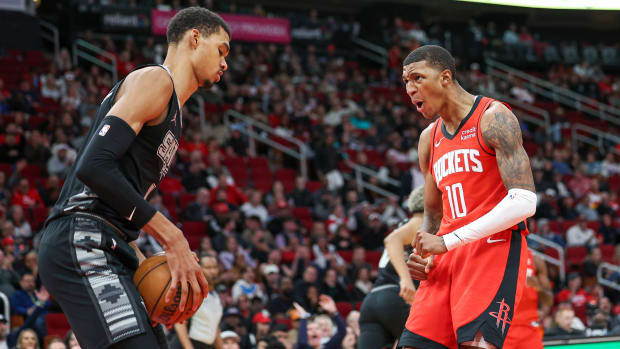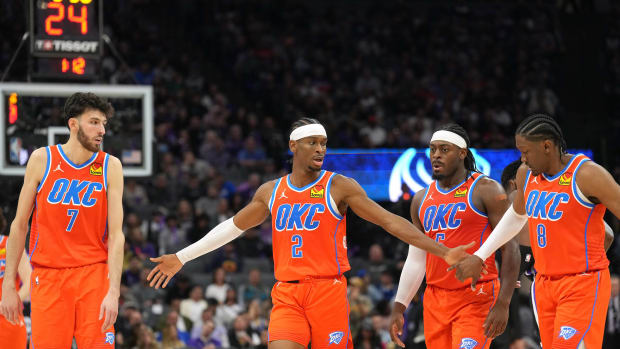Grade the deal: Greg Monroe inks max deal with Bucks in free-agent stunner
Greg Monroe is a complicated player when it comes to identifying a perfect fit. Some teams are poor stylistic matches. Others don’t have the right mix of personnel to best account for Monroe’s deficits, which as we saw in Detroit can lead to all sorts of structural issues on both ends. He’s worth a max contract (which comes with a starting salary of around $16 million) to the right team. To the wrong one, a Monroe max might be cumbersome to the expected parameters of a rebuild.
Fortunately, Monroe surveyed this summer’s free-agent market, met with four teams, and identified the one both closest to contention and best for his long-term needs: the Milwaukee Bucks. According to Yahoo! Sports, Monroe agreed to terms on Thursday to a three-year max deal, the final season of which is a player option. Reports differ as to what Monroe was offered by which teams, though the final verdict is clear: A big-name, big-money free agent shrugged off New York and Los Angeles to sign with an up-and-coming team in Milwaukee.
• MORE NBA: Free agent tracker | Grading every deal| Position rankings
That in itself is a positive step for the Bucks organization, which has historically had difficulty enough in even getting free agents to consider their case. The new appeal is the product. Jason Kidd coached one of the best young teams in the league to a playoff berth last season behind an elite defense. Giannis Antetokounmpo, Khris Middleton, Michael Carter-Williams, and John Henson all played important roles, and they’ll be joined next season by a returning Jabari Parker. Monroe signed on to be a part of that ascent both for what he could do for the Bucks and what the Bucks’ second-ranked defense could do for him.
SI.com's 2015 NBA free agent tracker
The trouble with Monroe on that end of the floor is that he offers little resistance at the rim and lacks the foot speed to make a balanced recovery out to a big on the perimeter. This makes traditional matchup maintenance tricky, as some nights Monroe is ill-equipped to guard either of the opponent’s power forward or center. Milwaukee’s defensive system, which relies heavily on zone principles, should help to mitigate some of those problems. Monroe will still have a specific assignments that give him trouble and won’t always be capable of making needed defensive plays. The very nature of the way that the Bucks play, however, will bring multiple long, athletic defenders toward the strong side of the floor and use Monroe’s size alone as an obstruction to potential drivers.
This kind of use isn’t fool-proof, though by using Monroe to clog up driving lanes and pre-rotating another player from the weak side to protect him, the Bucks’ base defense encourages opponents into cross-court passes that can either be deflected (Milwaukee ranked tops in the league in opponent turnover rate last season) or delayed long enough to reset.
Roundup: 2015 NBA free agent grades
Whether the Bucks have enough perimeter shooting to give Monroe a usable, post-up workspace is another matter entirely. Of those core young players listed above, only Middleton (40.7%) can shoot from beyond the arc at any acceptable percentage. Antetokounmpo (15.9%), Carter-Williams (14.3%), and Parker (25%), on the other hand, give opposing defenses absolutely no reason to guard them at that distance. Monroe will likely see defenders encroaching into his space until that changes, though in the meantime he can help give a perimeter-dominated offense some sense interior order while shooters like Jared Dudley and O.J. Mayo help to clear space.
Milwaukee was a pitiful offensive team last season, though within its roster one could see the bones of something interesting. Monroe is a means of accessing that promise; his high-usage utility eases the burden on the Bucks’ overwhelmed creators, even if the roster’s current state doesn’t yet allow Monroe himself to maximize his offensive game. Give it time. First, Milwaukee must find a balance in its operations around Monroe as the team’s other young players come into their own. Then comes the refinement of the roster to contending precision – a next step made possible by moves like this one, coaching like Kidd’s, and a team-wide commitment to organic growth.






























